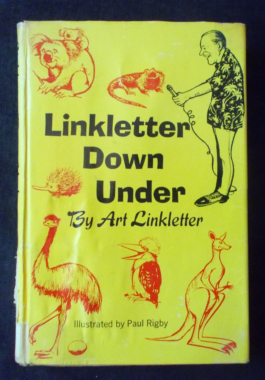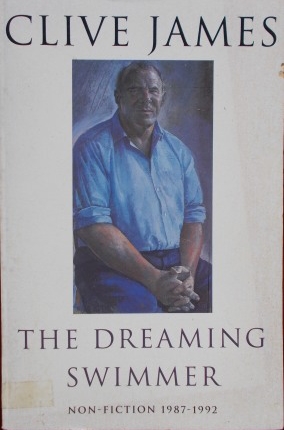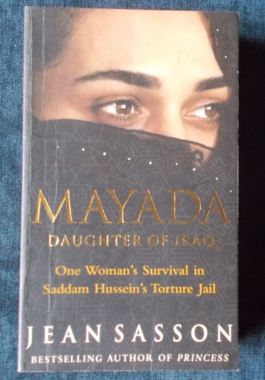-

Inferno! Hal Butler
$55.00A very interesting volume of accounts of great holocausts over the last one hundred years, with accounts from survivors, eyewitnesses, reporters and emergency service workers. Chapters: The Great Chicago Fire of 1871; the destruction of a tiny lumbering village in Peshtigo with a death toll of over 1,000; the Iroquois Theatre Fire, 1903; the burning of the paddle-wheel excursion boat, the General Slocum in 1904, with over 1,000 lives lost; the 1906 San Francisco earthquake destroyed not only homes and businesses, but utility services. When fires broke out, there was no water with which to fight them; The Triangle Shirtwaist Factory disaster, New York, 1911 when 146 employees died, many of whom had tried to leap from the windows to escape the flames; In Halifax, 1917, a fire on board the SS Mont Blanc - a French cargo ship - set off its load of high explosives, killing over 2,000 and injuring 9,000 more; In 1930, a candle ignited some oily rags left on the roof of the West Block of the Ohio State Penitentiary. Many inmates burned to death in their locked cells; The Hindenberg airship disaster of 1937; The Cocoanut Grove was Boston's top night spot - on November 28, 1942, a fire began which became the deadliest nightclub fire in history and the second-deadliest single-building fire in U.S. history, claiming 492 lives; July 6, 1944, in Hartford, Connecticut, saw a fire begin under the Big Top during an afternoon performance of the Ringling Bros. and Barnum & Bailey that would kill 160+ people; The Winecoff Hotel, Atlanta, was advertised as "absolutely fireproof" - but in December 1947, a conflagration broke out that would kill 119 people; In Galveston Bay, April 1947, a fire started on board the docked French-registered vessel SS Grandcamp, detonating her cargo of about 2,300 tons of ammonium nitrate, starting a chain reaction of fires and explosions in other ships and nearby oil-storage facilities, ultimately killing at least 581 people, including all but one member of the Texas City fire department; December 1, 1958 - a fire broke out at Our Lady of the Angels School in Chicago, killing 92 students and three nuns - a tragedy which caused over 16,000 schools across the U.S. to be brought up to safety standards before one year had passed. Illustrated with black and white photographs. -
 Art Linkletter was a Canadian-born American radio and television personality. In 1954, under the spell of Harold Holt's infectious evangelism for Australia as a land of opportunity, Linkletter and some celebrity friends formed a syndicate and prepared to go prospecting in the land where winter is summer and the soldiers wore wide brimmed hats turned up on one side. They were sure to meet koala bears and kangaroos and perhaps see some Stone-Age aboriginals wandering across the vast deserts, but beyond vague trivia, these 'babes' knew literally nothing about the 'land down under.' What they did meet was wild ducks and water buffalo who refused to give up their squatters' rights in the investment rice fields; plenty of sheep and plenty of Australians. A revealing, though dated, character sketch of Australia and its people. Illustrated by Paul Rigby.
Art Linkletter was a Canadian-born American radio and television personality. In 1954, under the spell of Harold Holt's infectious evangelism for Australia as a land of opportunity, Linkletter and some celebrity friends formed a syndicate and prepared to go prospecting in the land where winter is summer and the soldiers wore wide brimmed hats turned up on one side. They were sure to meet koala bears and kangaroos and perhaps see some Stone-Age aboriginals wandering across the vast deserts, but beyond vague trivia, these 'babes' knew literally nothing about the 'land down under.' What they did meet was wild ducks and water buffalo who refused to give up their squatters' rights in the investment rice fields; plenty of sheep and plenty of Australians. A revealing, though dated, character sketch of Australia and its people. Illustrated by Paul Rigby. -
 A collection of James' book reviews, performances, speeches about BBC, his selected verses, after dinner speeches and articles about BBC TV from 1987 - 1992. Among these gems are Billy Connolly, jet-lag in Tokyo and Frank Sinatra.
A collection of James' book reviews, performances, speeches about BBC, his selected verses, after dinner speeches and articles about BBC TV from 1987 - 1992. Among these gems are Billy Connolly, jet-lag in Tokyo and Frank Sinatra. -

 A stunning biography of Frank Winflied Woolworth and his humble origins. After working in a dry goods store, Frank Woolworth borrowed money from his boss to open what would be the first 5-and-10 cent store in 1879. It was not an overnight success - nothing daunted, he repaid the loan to his boss and tried again. This was a more successful effort and when he wanted to open a second store, he brought his brother Charles Sumner into the business. 'Sum' as he was known, spent time on the shop floor, talking to employees and shoppers to find out what was needed or wanted. By 1904 - a scant 25 years - there were six affiliated chains in the United States and Canada. By 1910, Frank had commissioned the design and construction of a pioneering skyscraper, the Woolworth Building in New York City which was the tallest building in the world until 1930. An extraordinary biography.
A stunning biography of Frank Winflied Woolworth and his humble origins. After working in a dry goods store, Frank Woolworth borrowed money from his boss to open what would be the first 5-and-10 cent store in 1879. It was not an overnight success - nothing daunted, he repaid the loan to his boss and tried again. This was a more successful effort and when he wanted to open a second store, he brought his brother Charles Sumner into the business. 'Sum' as he was known, spent time on the shop floor, talking to employees and shoppers to find out what was needed or wanted. By 1904 - a scant 25 years - there were six affiliated chains in the United States and Canada. By 1910, Frank had commissioned the design and construction of a pioneering skyscraper, the Woolworth Building in New York City which was the tallest building in the world until 1930. An extraordinary biography. -
 Australia was once a land where even the poorest man could own a horse. And in World War I, the Army decided that horsemen made the best aviators. Thus the Australian Flying Corps took off in frail machines of wood and wire, little more than big box kites. So began the means of conquering the vast Australian distance; but not content with just that, Hinkler, Kingsford-Smith and Larry Hargreave set out to conquer oceans, storms and the vast silent distances of Australia.
Australia was once a land where even the poorest man could own a horse. And in World War I, the Army decided that horsemen made the best aviators. Thus the Australian Flying Corps took off in frail machines of wood and wire, little more than big box kites. So began the means of conquering the vast Australian distance; but not content with just that, Hinkler, Kingsford-Smith and Larry Hargreave set out to conquer oceans, storms and the vast silent distances of Australia. -

The Australians: Peter Luck
$15.00Australians are a remarkable hybrid and this book is Peter Luck's celebration of the special breed found in our young and extraordinary nation. Looking beyond the image of the typical Aussie being a lean and laconic bushman, as big as the Outback and dry as a drought, there's a different character, one that defies definition. There's still a fair bit of the Aussie psyche in the philosophers, workers and 'lurk merchants' (taxi drivers); there's still some of the Aussie battler in sporting heroes and hustlers alike; and there's still plenty of 'guts' in the bronzed Anzacs. We are a forward-looking country - but our character is moulded by our memories. We cling to our traditions, both those inherited and those which evolved here. Here's Toots, the lady truckie; the Boorowa Debutantes; Sydney taxi drivers and some of their more unusual experiences; the old Diggers who 'did' the Kokoda Trail; Jeff St. John, hard man of Aussie rock; the Shearers; Pro Hart, the unpretentious and unpredictable artist; Eagle, the crime reporter who lives it hard and walks on the edge for a story; and much more. Illustrated with colour and black and white photographs. -
 Mayada was born into a powerful Iraqi family. When Saddam Hussein and his Ba'ath party seized power, the devastation on her life made her a divorced mother of two alone in Baghdad, earning a meagre living printing brochures - until one morning, in 1999, she was arrested by Saddam's Secret Police and taken to the notorious Baladiyat Prison, accused of producing anti-government propaganda. She and seventeen other women were imprisoned, tortured without trial and threatened with execution. Illustrated with black and white photographs.
Mayada was born into a powerful Iraqi family. When Saddam Hussein and his Ba'ath party seized power, the devastation on her life made her a divorced mother of two alone in Baghdad, earning a meagre living printing brochures - until one morning, in 1999, she was arrested by Saddam's Secret Police and taken to the notorious Baladiyat Prison, accused of producing anti-government propaganda. She and seventeen other women were imprisoned, tortured without trial and threatened with execution. Illustrated with black and white photographs. -

 A very thorough work which - in this edition - also covers the years since Federation. Contents: The First Visitors; The Penal Settlement; The Colony Expands; The Days of Bourke; The Daughter Colonies; The Coming Of Self-Government; New Zealand In The Early Days; New Zealand 139-1851; The Gold Discoveries And Their Results; Filling In The Map; Constitutional Government; New Zealand Since 1850; Australiasia; Australian Literature: this chapter covers such luminaries as Henry Kendall, Marcus Clarke; A.B. 'Banjo' Paterson, Henry Lawson and Adam Lindsay Gordon, among others. A must for any sincere history buff. With fine colour maps, numerous black and white illustrations and useful margin notations for quick reference.
A very thorough work which - in this edition - also covers the years since Federation. Contents: The First Visitors; The Penal Settlement; The Colony Expands; The Days of Bourke; The Daughter Colonies; The Coming Of Self-Government; New Zealand In The Early Days; New Zealand 139-1851; The Gold Discoveries And Their Results; Filling In The Map; Constitutional Government; New Zealand Since 1850; Australiasia; Australian Literature: this chapter covers such luminaries as Henry Kendall, Marcus Clarke; A.B. 'Banjo' Paterson, Henry Lawson and Adam Lindsay Gordon, among others. A must for any sincere history buff. With fine colour maps, numerous black and white illustrations and useful margin notations for quick reference. -
 An analysis of some of Australia's most famous writers, with excerpts from their novels, to demonstrate and trace the origins of the Australia novel. Included in this volume: Geoffrey Hamlyn, Henry Kingsley; For the Term of His Natural Life, Marcus Clarke; Robbery Under Arms, T.A. Browne; A Marriage Ceremony, Ada Cambridge; On Our Selection, Steele Rudd; Such Is Life, Tom Collins; We Of The Never-Never, Mrs Aeneas Gunn; The Escape Of Sir William Heans, William Hay; Working Bullocks, Katharine Susannah Prichard; Up the Country, 'Brent of Bin Bin'; The Mountfords, Martin Boyd; The Fortunes of Richard Mahoney, Henry Handel Richardson; A House Is Built, M. Barnard Eldershaw; The Passage, Vance Palmer; Man-shy, Frank Dalby Davison; Sun Across the Sky, Eleanor Dark; Mountain Flat, Leonard Mann; The Pea Pickers, Eve Langley.
An analysis of some of Australia's most famous writers, with excerpts from their novels, to demonstrate and trace the origins of the Australia novel. Included in this volume: Geoffrey Hamlyn, Henry Kingsley; For the Term of His Natural Life, Marcus Clarke; Robbery Under Arms, T.A. Browne; A Marriage Ceremony, Ada Cambridge; On Our Selection, Steele Rudd; Such Is Life, Tom Collins; We Of The Never-Never, Mrs Aeneas Gunn; The Escape Of Sir William Heans, William Hay; Working Bullocks, Katharine Susannah Prichard; Up the Country, 'Brent of Bin Bin'; The Mountfords, Martin Boyd; The Fortunes of Richard Mahoney, Henry Handel Richardson; A House Is Built, M. Barnard Eldershaw; The Passage, Vance Palmer; Man-shy, Frank Dalby Davison; Sun Across the Sky, Eleanor Dark; Mountain Flat, Leonard Mann; The Pea Pickers, Eve Langley.



